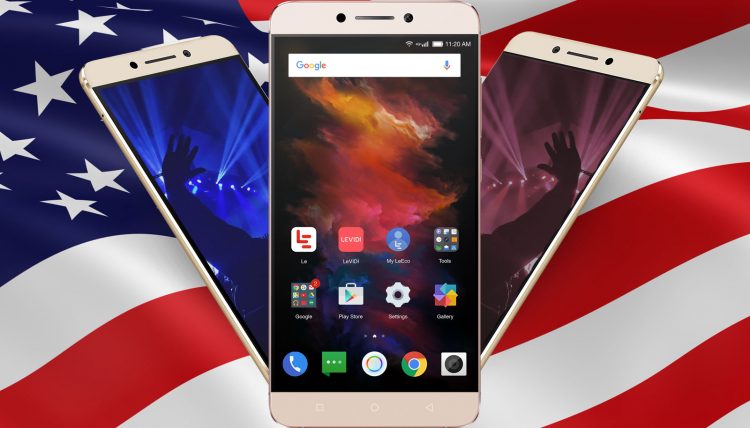
Photo credit: Guardian Liberty Voice.
Yesterday, Chinese tech giant LeEco held a massive launch event heralding its arrival in the US. The company had previously taken the Xiaomi route, selling only small peripherals like headphones in America, but that’s all about to change. Starting in November, the company now will be selling lots of things: its smartphones, its smart TVs, its smart bike, its content platform, its cloud storage, and more.
Clearly, LeEco has decided it’s time to get serious about the US market. Unfortunately, it’s coming out of the gate with a huge mistake: flash sales.
Yes, if you want to buy a LeEco TV or smartphone in the US, you can’t simply preorder one. Instead, you’ll have to hop onto the company’s website on November 2 and 10 AM PT. CEO Jia Yueting has said only 100,000 phones will be available; he’s not sure how many smart TVs will be up for grabs.
Why this is a terrible idea

First: flash sales only work if you have a brand. Xiaomi built its China empire on flash sales, but Xiaomi was also a buzzy startup that had China’s tech geeks excited for months before the first phones ever went on sale. Desire for the phones was so high that when people missed out on getting one, they just waited for the next sale. And the news of lightning-fast sellouts helped to underscore the idea that Xiaomi was the hot new commodity, driving up desire further with each subsequent sale.
LeEco may be inspired by Xiaomi’s early success using this approach in China, but LeEco is not Xiaomi. It has done virtually no marketing in the US, and its brand recognition even among American tech enthusiasts and geeks is near zero. At best, LeEco is known in the US as “that company that bought Vizio,” and at worst it’s known as “who?” This is not the recipe for a successful flash sale. Now, LeEco has just a few weeks to build a massive buzz in the US, or one of two things is going to happen.
Guess how many of my American friends posted about LeEco’s US launch event on Facebook: zero.
One: the phones and TVs won’t sell out, defeating the purpose of having a flash sale in the first place and building no hype for the brand. Or two: the products do sell out, and thousands of potential LeEco customers go to the company’s site, realize they can’t actually buy the product they wanted, shrug, and decide to buy some other company’s product instead. LeEco’s products are cool, but not cool enough that anybody’s going to wait months for the next flash sale if they need a new phone or TV.
Yeah, people will wait for a new iPhone, but iPhones have massive brand awareness. When Apple has a launch event, the next iPhone fills my Facebook feed for the next few days. Guess how many of my (mostly China- and tech-loving) American friends posted about LeEco’s US launch event on Facebook: zero.
Second: Americans don’t like flash sales. Even if LeEco did have some brand buzz in the US, a flash sale would still be a bad idea. Chinese tech companies like LeEco and OnePlus seem to come to the US assuming that the artificial-scarcity approach will work in America now because it worked for Xiaomi in China back in 2011. But there’s little reason to believe this is the case. OnePlus has already abandoned its invite-only model (which American OnePlus fans hated), and I expect LeEco will ultimately be forced to do the same thing.
Certainly, if you look at the history of America’s gadget market, there’s nothing that suggests flash sales would be a good idea. None of the major players in the US smartphone or smart TV markets got to where they are using flash sales. This is a lesson LeEco could have learned from its new subsidiary Vizio. Vizio didn’t break into the US market via artificial scarcity and flash sales. In fact, it got its big break doing virtually the opposite: getting its TVs onto store shelves in Wal-Mart.
Dark clouds on the horizon
I don’t know for sure how LeEco’s November 2 sale is going to go. Perhaps the company has some massive marketing bonanza planned that will drive up hype and make the sales a success. I would love to be proved wrong.
But there’s a lot stacked against LeEco in the way it’s approaching the US market. American consumers don’t know its brand; why should they care there’s a limited window to purchase products they haven’t heard of? American consumers don’t like flash sales. And consumers in general don’t tend to like buying expensive tech products sight-unseen off of websites they’ve never heard of before. But that’s exactly what LeEco fans will have to do in the US, as its gadgets are available only on its own website.
How, in the next three weeks, does LeEco plan to make Americans so aware of its company that they’re willing to log onto a website they’ve never heard of at a specific time of day to buy products they’ve never heard of?
Maybe there’s an answer to that question. But I sure as hell don’t know what it is, and I’d be surprised if LeEco does either.
This post “China’s Netflix” launches in the US, immediately fucks up appeared first on Tech in Asia.
from Tech in Asia https://www.techinasia.com/chinas-netflix-launches-immediately-fucks
via IFTTT
No comments:
Post a Comment